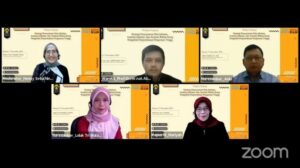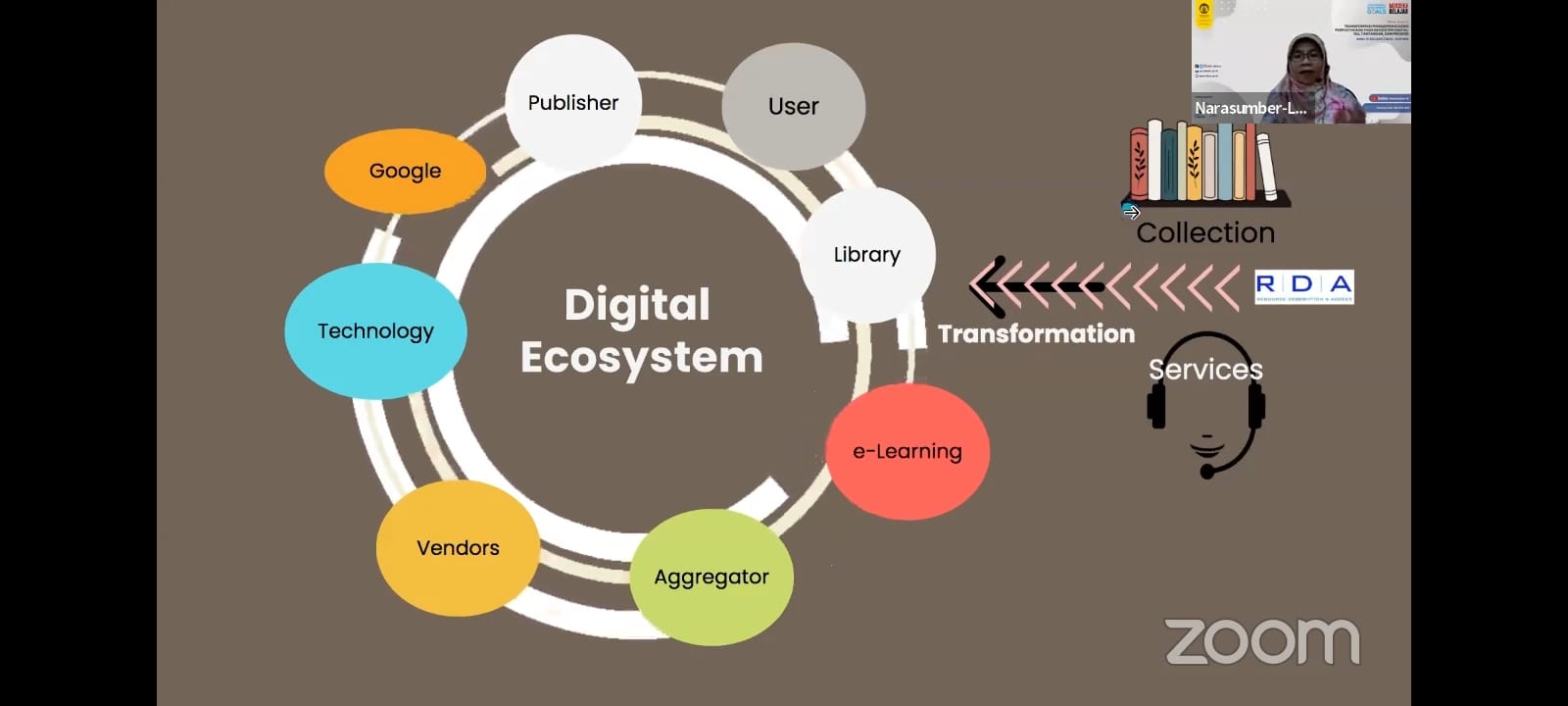Strategies for Developing Job Position Map, Job Analysis, and Workload Analysis for University Library Managers
Library managers, especially Higher Education Libraries, need to formulate the right Job Position Map, Job Analysis, and Workload Analysis. This aims to be able to measure the needs and availability of human resources for librarians, career development for librarians, and so that the organized programs can run effectively, efficiently, synergistically and sustainably. Library leaders are expected to be able to make job position maps and optimize all components in the library to support the Tri Dharma of Higher Education.
To achieve this goal and enrich the insights of library managers in Indonesia regarding the preparation of Job Position Map, Universitas Indonesia Library held a National Webinar with the theme “Strategy for Organizing Job Position Map, Job Analysis, and Workload Analysis for Higher Education Library Managers” on Thursday (17/11). Two speakers who attended the national webinar were Head of State Civil Apparatus Needs Planning Center of National Personnel Agency Aidu Tauhid, S.E., M.Sc.; and a Librarian of Universitas Indonesia Library, Luluk Tri Wulandari, M.Hum.
Vice Chancellor for Academic and Student Affairs of UI Prof. Dr. err. nat. Abdul Haris, M.Sc. provided support for the national webinar that was held. According to him, “The job position map is very important to describe the need for positions in libraries and universities. Also, it is to ensure the ideal number of librarians to support and complete the work according to their duties and functions within the needs of the organization while remaining aligned with the vision and mission of the university library. It is hoped that this national webinar can provide benefits and in-depth knowledge for participants, especially regarding the preparation of job position map, job analysis, and workload analysis of higher education library managers, especially for university libraries,” said Prof. Harris.
Job position map is a job position arrangement that is described vertically or horizontally, according to the authority structure, duties and responsibilities of the position as well as the requirements of the position. Then the notion of job analysis is the process, method, and technique for obtaining job data that is processed into job information. Meanwhile, workload analysis is a process for determining the number of working hours used or needed to complete a job in a certain time.
Head of Technical Implementation Unit of UI Library Mariyah, M.Hum., said “Library managers, especially university libraries, need to formulate job position map, job analysis, and workload analysis that are correspond with the regulations. This aims to measure the needs and availability of human resources, to develop librarians’ career, and to prepare programs that can run effectively, efficiently, synergistically, and sustainably.”
On this occasion, the Head of State Civil Apparatus Needs Planning Center – National Personnel Agency, Aidu Tauhid, SE, M.Sc., explained material related to job position mapping, job analysis, and policy direction in Prioritas Nasional VII RPJMN 2020-2024. “There are 5 elements that need to be considered in preparing a job position map, namely (1) Position structure, (2) Organizational unit workload, (3) Number of existing employees, (4) Employee needs; and (5) Class of position. Synchronization in consideration of desires also needs to be adjusted to needs and finances in order to avoid inconsistencies. In the meaning of communication in library management, communication is a unit that includes understanding, agreement, and togetherness in library management,” said Aidu.

The next speaker Luluk Tri Wulandari, M.Hum. added an explanation of the arrangement by providing examples of job position map, job analysis, and workload. “In workload analysis as a librarian, we have a guideline, namely “the librarian’s activities”, which are used as a reference in workload analysis. Thus, there will be calculations, which can systematically find out the level of effectiveness and efficiency of the organization’s work based on the workload to calculate the suitability of the work needs,” said Luluk.

